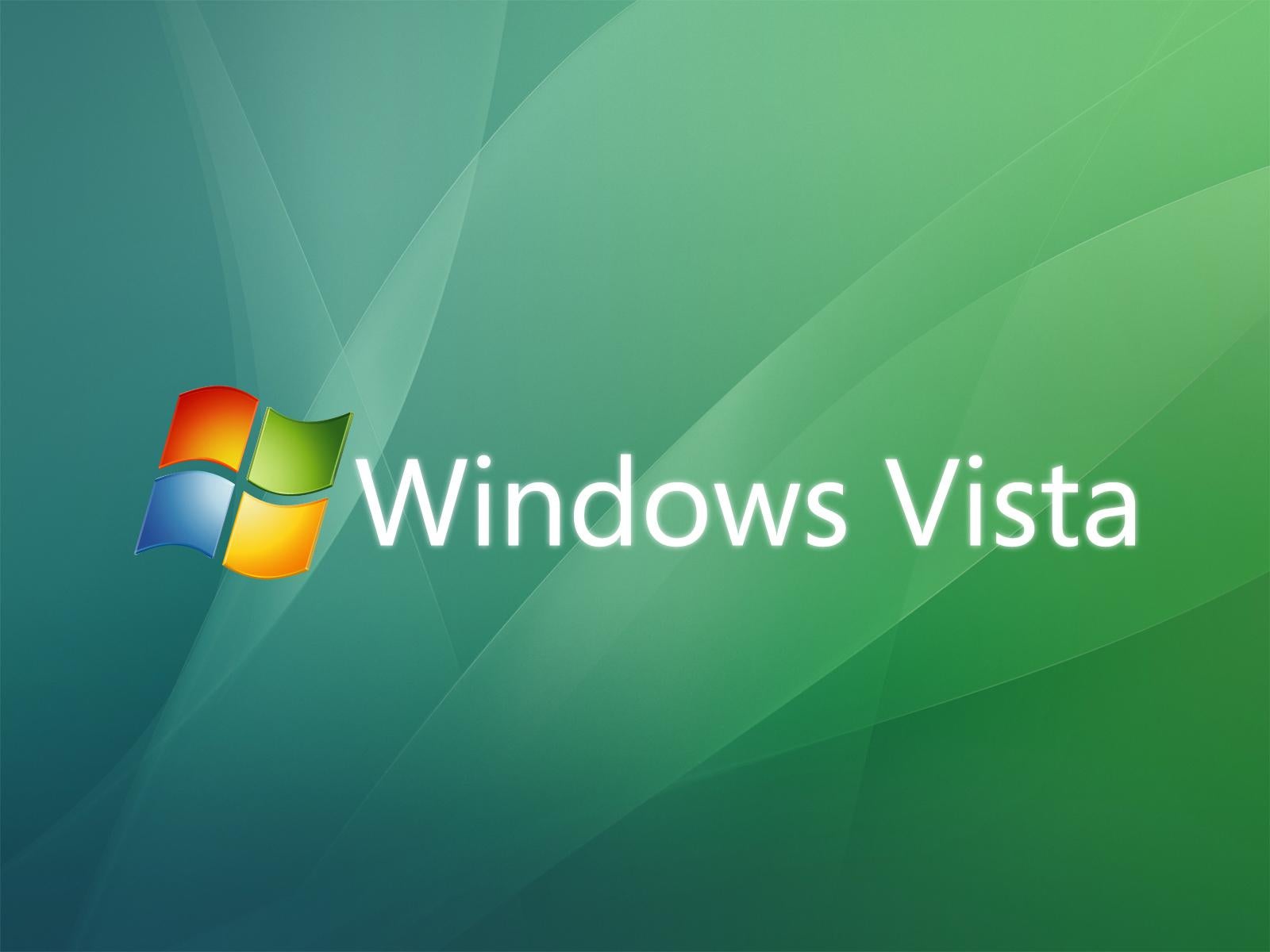Windows Vista is a much-maligned operating system, and it’s not hard to see why. Vista was a resource hog, a constantly-crashing liability, and the OS on which many unpopular features (such as Games for Windows Live) originally debuted. Despite this, however, there are still some who would champion Vista and say it’s their favourite operating system, and believe it or not, some PCs are even still running Windows Vista today. Here are 17 things you might not have known about Windows Vista, Microsoft’s least popular operating system (possibly).
1. Windows Vista’s development was reset in 2004
Halfway through its development process, Windows Vista started development in 2001, right before Windows XP (which was a much more popular system) launched. Microsoft intended for Vista to be a next-generation OS with a much smoother and less old-school look than XP, but it ran into development trouble thanks to bloat, which led Microsoft to scale back its development and move its release date to a far more sensible one.
2. Vista had hardcore system requirements
One of the reasons many people didn’t like Windows Vista was because of its system requirements. While they might look pretty modest today – 512MB of RAM, an 800MHz processor, and 20GB of hard drive space – many PCs at the time weren’t prepared for Vista’s arrival, which meant the OS was slow on those machines. In addition, the graphics requirement – a DX9-compatible card! – was way beyond the scope of many commercial PCs at the time.
3. Windows Vista was expensive
Many people accuse Apple of pricing their products far too high, but Microsoft was at it around the time of Vista’s launch as well. Get this; for the ultimate edition of Vista, you’d have to pay an eye-watering $400. That’s right, $400. As a comparison, Windows 10 Pro cost just $199, and considering it was intended for business use, that’s a much more reasonable price tag. Windows 11 won’t cost most consumers anything, because Microsoft is giving it away for free as an update.
4. Vista introduced User Account Control
If you ask many people what their least favourite feature in Windows Vista was, they’ll probably point to the User Account Control dialogue. This little box popped up whenever you tried to run an app or open one of your files, and it was intrusive and annoying. It was a precursor to the modern Windows “run as administrator” dialogue, but it was far more flighty and difficult to predict. Fun fact: User Account Control is actually still in use today, albeit far less intrusive.
5. Windows Vista was rough for stability at launch
When Windows Vista launched, it found itself incompatible with a wide variety of PC and hardware drivers, leading to compatibility issues and crashes across the board. It made a lot of consumers furious that they couldn’t use the OS they’d just bought, and it took Microsoft until the release of the first Service Pack (remember those?) to rectify many of these issues. This is partly what contributes to Vista’s reputation as a bad OS.
6. Microsoft held a “Guess the Launch Date” Vista campaign
Perhaps in an attempt to head off criticisms of its long delays at the pass, Microsoft held a “Guess the Launch Date” contest for Vista in 2006 when the OS was about to launch. Given that Vista was originally pegged for a release date of 2004, but then the development got restarted (as we discussed above), this was a point of soreness for many users who had been waiting for Vista for some time already.
7. Vista Home Basic couldn’t run the standard Vista interface
Windows Vista’s interface was called Aero, and it was the flashy new visual style that replaced XP’s by then somewhat tired aesthetic. However, the entry-level package for Vista, which was called Windows Vista Home Basic, was so basic and devoid of features that it couldn’t actually run Aero, which meant you had to use something more akin to the XP look.
8. Windows Vista’s new sleep features were pretty good
Despite all the issues users had with Vista, there was one part of it that was mostly accepted as being beneficial, and that was the new sleep-wake system. With that system, some users estimated that Vista could go to sleep and be awoken within just 6 seconds, which was a pretty good milestone at the time. It didn’t quite make up for all the ways in which Vista disappointed people, but it was something, at least.
9. Apple’s “I’m a Mac” ads targeted Vista
Spying an opportunity to shore up their market presence, Apple began to relentlessly attack Windows. Their famous “I’m a Mac” campaign pointed to some of Vista’s weaknesses, slating the system’s slow performance, buggy nature, and difficult user interface. Windows eventually returned the serve with its own campaign, but by then, the damage was done. The groundwork was already being laid for Windows 7.
10. 0.19% of computers still use Vista
Did you know that 0.19% of PCs worldwide are still running Windows Vista? It’s true – there are still a handful of PCs out there that operate Microsoft’s vilified system. That might not sound like a lot, but when we consider that Microsoft ended support for Vista many years ago, that number is pretty impressive. To us, it’s clear that whoever is still running Vista out there desperately needs to update their software.
11. Microsoft officially ended support for Vista in 2017
Microsoft killed Vista a little later than you might expect. The company officially ended support for its controversial operating system as late as 2017, which meant that users were still receiving critical security and functionality updates right up until that point. Now, however, if you’re still running Vista, you’ll have even more security vulnerabilities than the OS showed at launch, which is impressive (if terrifying).
12. Some browsers still support Vista
There are still some browsers out there that support Windows Vista, so you’re not necessarily out of luck if you want to download something that works with the OS. The best browser to use with older systems is Opera; it has compatibility with Vista, which means you’ll be able to install it and use it with no issues. Of course, you might find yourself prey to security vulnerabilities, but you can download antivirus software to circumvent at least some of those problems.
13. Vista should never have happened
Originally, Microsoft’s plan was to move to a sort of subscription-based model for Windows XP, which is why the company dropped the standard numbering scheme and went with “XP” instead. Obviously, that didn’t pan out, and so Microsoft decided to release another operating system. In many ways, Microsoft was ahead of the curve; the subscription model is now standard for so many services and systems that it seems like Microsoft had a crystal ball in that regard.
14. Vista’s launch actually helped XP
In some areas, the launch of Windows Vista actually had a beneficial effect…for Windows XP. This is because many laptops and PCs that didn’t have the hardware to run Vista began advertising themselves as carrying the XP software instead. As such, users who didn’t want or couldn’t afford high-end machines bought lower-spec XP computers instead, thus increasing XP’s market share (and lowering Vista’s).
15. Games for Windows Live arrived with Vista
Games for Windows Live, a universally hated feature on Windows, arrived not long after the advent of Windows Vista. It was essentially a wraparound feature that combined Xbox Live functionality with a sort of DRM-style system that stopped gamers from accessing their games easily. Obviously, Games for Windows Live was a terrible idea, and Microsoft officially retired support for it a few years ago, with devs occasionally releasing new versions of games that carried the software.
16. Windows Vista was the 8th Windows iteration
Don’t listen to Windows’ naming scheme; Windows Vista is the real Windows 8. The journey began all the way back in 1985 with Windows 1.0, then various iterations were released over the years, culminating in Windows XP in 2001 (which was the seventh iteration of Windows). Windows Vista is therefore the eighth version of Windows, even though Microsoft decided to name the followup Windows 7. It’s a similar naming system to the Grand Theft Auto games.
17. Windows Vista’s codename was “Longhorn”
While it was in development, Windows Vista was codenamed “Longhorn”. Other Windows codenames include “Whistler” (for Windows XP) and Memphis (Windows 98). Microsoft is well-known for giving its operating systems single-word codenames; even Windows 11 was codenamed (it was called, in various versions, Cobalt, Copper, and Nickel). There’s no real system to Microsoft’s codenames; they change the theming on a whim, although it remains consistent from grouping to grouping.
We hope you’ve enjoyed our Windows Vista facts! This might not be Microsoft’s most popular operating system, but it’s certainly had some interesting things happen to it and around it over the years!
– Continue Reading This Article Series
17 Things You Didn’t Know About Windows:
– Windows 3.0x
– Windows 95
– Windows 98
– Windows Me
– Windows Vista
– Windows XP
– Windows 7
– Windows 8
– Windows 10
– Windows 11

